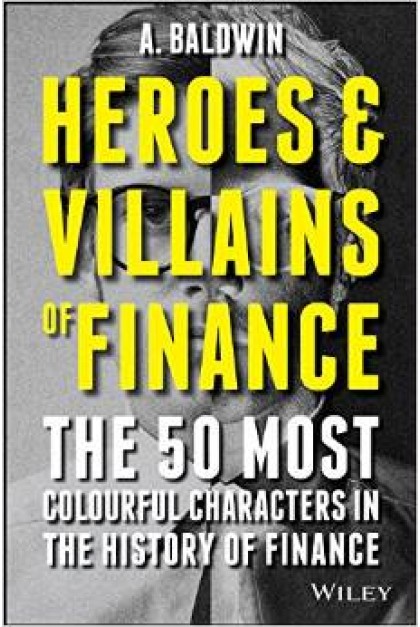Book Review: Heroes & Villains of Finance
I made it through this book while watching my daughter at a softball tryout. ?It was an overly easy read, because there is little in the book. ?For each of the 50 characters in the book, you get around 1.5?pages of text. ?An average article at Aleph Blog would be the length of 2-3 biographical vignettes contained in this book. ?At most, you learn the highest points of their lives.
But, I have other criticisms:
- You don’t even necessarily get the highest points of their lives. ?I read through a few of them and thought I could have done a better job summarizing their lives with one hour of time.
- Many of the characters don’t deserve to be in the book. ?Some?aren’t important or colorful enough. ?Others?are too recent to evaluate how truly “colorful” or important they are. ? Others aren’t truly in finance — they may be in business, politics, or academic economics, but they had little to do with finance in any direct way.
- Occasionally, there are factual errors, such as with Nick Leeson, where it attributes his famous “I’m Sorry,” note to February 1994 (twice), while having him flee?one year later in 1995. ?Both happened in February 1995.
This book is bad enough that the author should be absolved from blame, and that the editors and anyone else in the approval process at Wiley should receive it. ?This book should never have seen the light of day in its present form. ?Wiley’s quality control is usually quite good — something went awry here.
Now, lest this be purely negative, I have two ideas. ?Simple idea one: go buy Kenneth Fisher’s 100 Minds that Made the Market. ?This is the book that Heroes &?Villains of Finance should be. ?As I say in my review:
Some people are hard to buy gifts for.? With books, there is often a trade-off between books that say a lot, and those that people are willing to read.? One book that I think hits the sweet spot is 100 Minds That Made The Market, by Ken Fisher.
Why do I think this?? This book is 100 little books in one volume.? You can pick this book up for five minutes, and read a well-written 3-4 page biography of person who has had a significant impact on how our markets work today.? Then you can put it down, get back to work, and think that you have learned something significant.
So if you want a book of short biographies, this is a better one. ?I think it makes an excellent gift.
Idea number two, for the folks at Wiley — here’s a book that could sell: [20-50] Greatest Financial Scandals Ever. ?Average people aren’t looking for heroes in finance. ?It’s not that there aren’t any. ?It’s just that the scoundrels are far more interesting to read about. ?Finance, when done right, is boring. ?Margin of safety, low debt,?ethical management, etc… good to learn from, but won’t tell interesting stories to the same degree.
I would encourage the author to take it one step further as well: add a final chapter to give the common themes that run through the scandals. ?Books like?Heroes &?Villains of Finance leave you with no generality at the end — is there some common thread behind heroes? ?What of villains? ?Are there lessons to be drawn here from the sum total of the lives considered?
Summary?
Don’t buy?Heroes and Villains of Finance. ?Instead, if you want such a book, buy?100 Minds That Made the Market. ?If you buy through the link I provide here, I get a small commission. ?At present, it is the only revenue source for my blog.
Full Disclosure
I review books because I love reading books, and want to introduce others to the good books that I read, and steer them away from bad or marginal books.? Those that want to support me can enter Amazon through my site and buy stuff there.? Don?t buy what you don?t need for my sake.? I am doing fine.? But if you have a need, and Amazon meets that need, your costs are not increased if you enter Amazon through my site, and I get a small commission.? Win-win.











